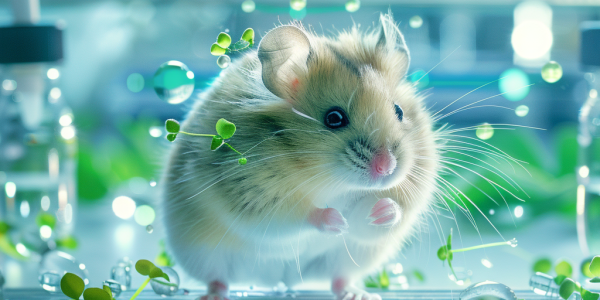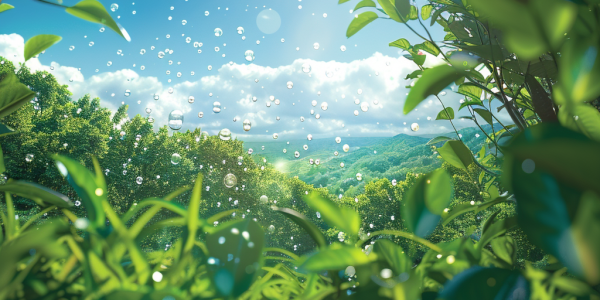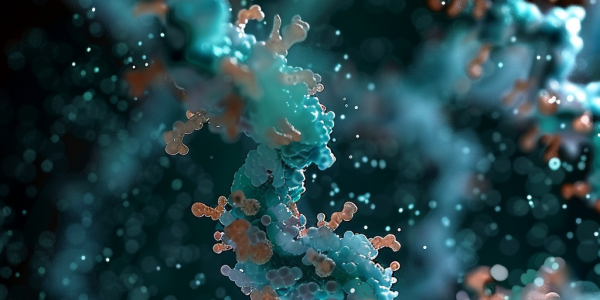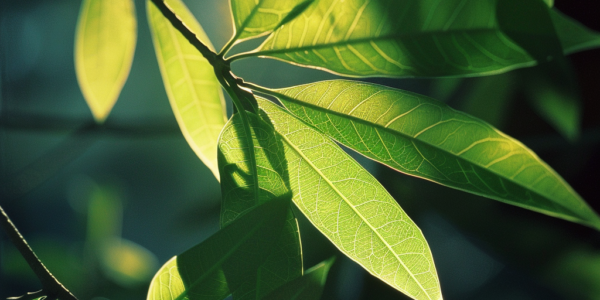Recent Discoveries in Evolution and Ecology: From Ethiopian Wolves to Ancient Hominins
Recent discoveries highlight significant findings in the fields of ecology and paleontology. Ethiopian wolves have been observed feeding on nectar, showcasing their adaptability, while research on the Clovis people reveals their reliance on large mammals like mammoths. Additionally, a new species of fossil armadillo has been identified in Brazil, and evidence of coexistence among hominin species in Kenya 1.5 million years ago challenges previous evolutionary timelines. These studies enhance our understanding of both ancient ecosystems and modern biological processes.
Scientists Create Solar-Powered Hamster Cells in Biotech Breakthrough
Scientists in Japan have achieved a groundbreaking feat by integrating chloroplasts into hamster cells, allowing them to harness sunlight for energy. This innovative research, published in the Proceedings of the Japan Academy, Series B, challenges previous beliefs about the compatibility of plant organelles with animal cells and opens new avenues for tissue engineering and regenerative medicine.
Discovery of ‘Chonkus’ Bacterium Offers Hope in Climate Change Fight
The discovery of a new bacterium, UTEX 3222, known as ‘Chonkus,’ offers hope in the fight against climate change. Found in volcanic ocean vents, this cyanobacterium shows exceptional capabilities for carbon dioxide absorption, making it a promising candidate for carbon capture technologies. Research highlights Chonkus’s potential to significantly reduce atmospheric CO2 levels, paving the way for innovative solutions in environmental science.
New Research Reveals 31% Increase in Global Plant CO2 Uptake
Recent research published in Nature reveals that global plant carbon dioxide (CO2) uptake has increased by 31%, now estimated at 157 petagrams of carbon annually. This study highlights the critical role of terrestrial ecosystems in carbon sequestration and climate change mitigation, utilizing innovative tracking of carbonyl sulfide (OCS) to enhance understanding of photosynthesis. These findings could inform future climate models and policy decisions aimed at reducing greenhouse gas emissions.
Binghamton University Develops Artificial Plants for Air Purification and Energy Generation
Binghamton University researchers have developed innovative artificial plants that purify indoor air and generate renewable energy. Led by Professor Seokheun Choi, this groundbreaking project addresses the urgent need for improved air quality, especially post-COVID-19, while harnessing carbon dioxide to produce oxygen and electricity. Their findings, published in Advanced Sustainable Systems, highlight the potential of these artificial plants to enhance indoor environments and contribute to energy efficiency.
Study Explores Photosynthesis Potential Under K-Dwarf Stars
A recent study investigates how photosynthetic organisms, including garden cress and cyanobacteria, perform under light from K-dwarf stars. Findings suggest these organisms can thrive in such environments, expanding our understanding of potential life on exoplanets. This research highlights the adaptability of life beyond Earth and underscores the importance of exploring various stellar conditions in astrobiology.
Unraveling the Secrets of Prochlorococcus’ Iron-Binding Protein
Researchers at the University of Southampton, led by Ivo Tews, uncover the secrets behind Prochlorococcus’ ability to thrive in low-nutrient waters through the study of its iron-binding protein, FutA. The study, published in the Proceedings of the National Academy of Sciences, utilized advanced structural biology techniques to reveal how FutA can accommodate iron in two oxidation states, enhancing the cyanobacterium’s efficiency in nutrient-poor environments. Neutron crystallography and optical spectroscopy measurements were key in determining the charges of amino acid side chains and tracking iron oxidation states, with Diamond Light Source’s I24 beamline playing a crucial role in capturing real-time structural changes in FutA.
The Role of Crustal Carbonate Build-Up in Earth’s Oxygenation
A recent study published in Nature Geoscience sheds light on the role of crustal carbonate build-up as a driver for Earth’s oxygenation, presenting a theoretical framework for the long-term global oxygen, phosphorus, and carbon cycles. The findings reveal that the accumulation of carbonates in the Earth’s crust has a significant impact on the planet’s oxygenation trajectory in both the atmosphere and oceans, providing valuable insights into the complex interplay between geological and biological processes that have shaped Earth’s atmosphere and oceans over billions of years.
New Study Reveals Molecular Mechanisms Behind How Plants Synchronize Photosynthesis in Varying Light Conditions
A recent study led by Professor Dr. Ute Armbruster has uncovered the molecular mechanisms behind how plants synchronize their photosynthesis process in response to changing light conditions. The research, published in Nature Communications, identified a key protein called thylakoid K+-exchange antiporter 3 (KEA3) that plays a crucial role in regulating the activation and deactivation of energy-dependent quenching (qE) to prevent potential damage from excessive light. These findings have significant implications for agricultural and environmental research, offering potential avenues for optimizing photosynthesis to enhance food production and improve stress tolerance in plants.
Canadian Lake Bacterium Shines New Light on Ancient Photosynthesis
University of Waterloo PhD student turns a failed experiment into a groundbreaking discovery, shedding new light on ancient photosynthesis. The unexpected bacterial sample from a Canadian lake has the potential to revolutionize scientific understanding of photosynthesis and its origins, showcasing the importance of embracing unexpected outcomes in scientific exploration.










